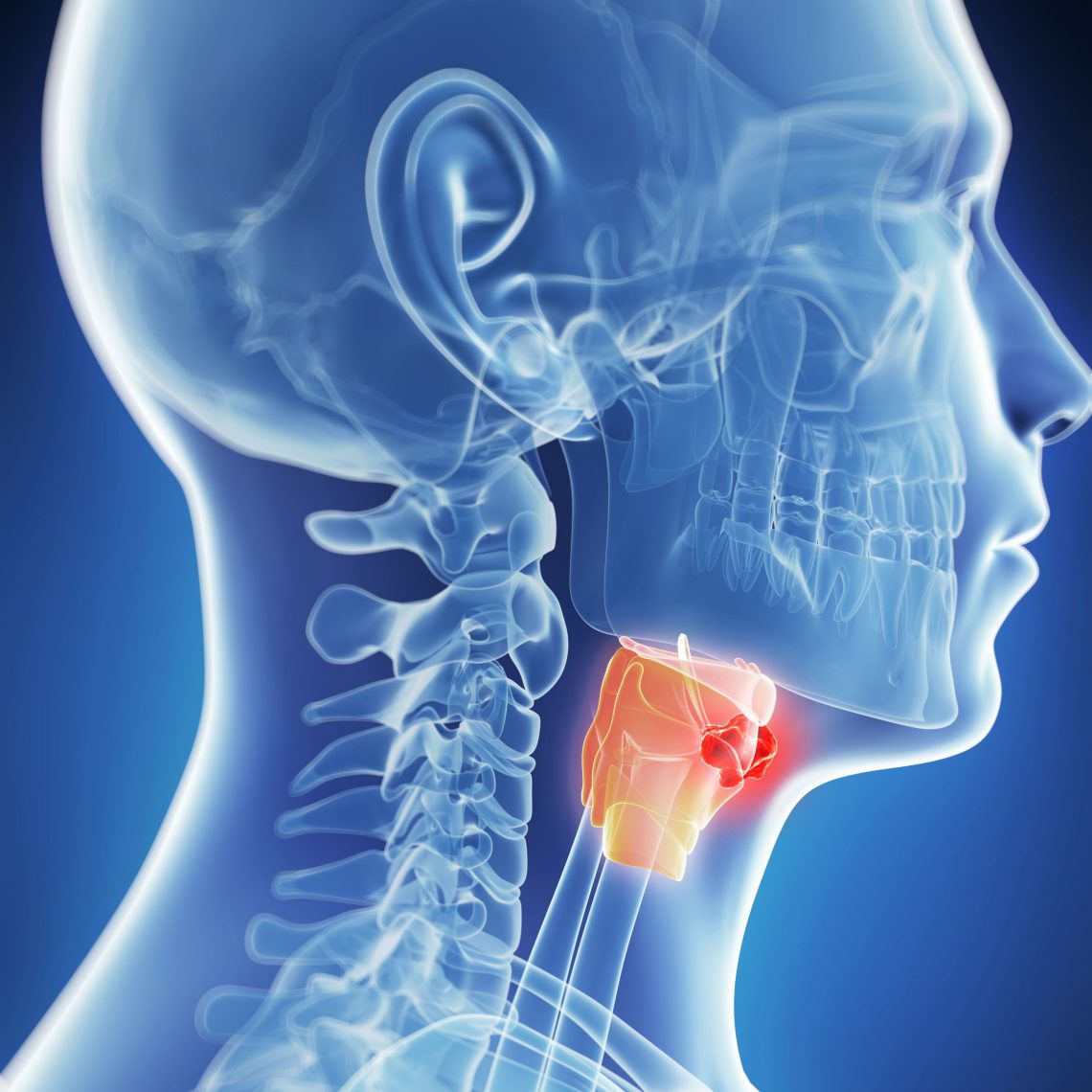
Laryngeal cancer is a disease in which malignant (cancer) cells form in the tissues of the larynx. The larynx is a part of the throat, between the base of the tongue and the trachea. The larynx contains the vocal cords, which vibrate and make sound when air is directed against them.
The sound echoes through the pharynx, mouth, and nose to make a person’s voice. Larynx is made up mostly of cartilage, a flexible tissue that forms a framework of support.
The three parts of the Larynx are:
- The supraglottis, or upper part
- The glottis, or the middle part. This is where the vocal cords are located. The vocal cords open and close, and allows the person to breathe and speak
- The subglottis, the lower part
Risk Factors
Laryngeal cancer is a rare cancer in which malignant cells grow in the larynx, or voice box. Smoking tobacco and drinking alcohol are the main risk factors for laryngeal cancer.
Other risk factors include:
- Age – laryngeal cancer occurs most often in people over the age of 55
- Gender – men are more likely to develop cancer of the larynx
- A personal history of head and neck cancer – nearly one in four people who have had head and neck cancer will get it again
- Occupation – workers who are exposed to sulfuric acid mist, wood dust, nickel, or the manufacturing of mustard gas have a greater risk of laryngeal cancer. In addition, machinists and people who work with asbestos are at greater risk
Signs and Symptoms of Laryngeal Cancer
Some of the following may symptoms of laryngeal cancer, or they could be symptoms of other conditions:
- A sore throat or cough that does not go away
- A change in your voice, such as hoarseness, that does not get better after two weeks
- Any pain or other trouble when you swallow
- Ear pain
- A lump in the neck or throat
- Dysphonia (problems producing voice sounds)
Other symptoms that requires patient to see doctor immediately:
- Dyspnea (trouble breathing)
- Stridor (breathing that is high-pitched and noisy)
- Globus sensation (a feeling like there is something in the throat)
- Hemoptysis (coughing up blood)
Diagnosis
- Physical Exam
- Laryngoscopy
- Biopsy
- CT or CAT Scan
- MRI
- PET Scan
Treatment
Treatment will depend on the extent of the cancer. The doctor may use radiation therapy or surgery in the earliest stages of treatment. Surgery is a common method for tumor removal. Risks from cancer surgery aren’t uncommon. They’re more likely to occur if the cancer has had time to spread.
- Difficulty breathing
- Difficulty swallowing
- Neck disfigurement
- A loss or change of voice
- Permanent neck scars
Then, radiation therapy tries to kill any remaining cancer cells. The doctor may prescribe radiation therapy alone to treat small cancers. Chemotherapy is also another type of treatment.
What We Offer
We at Almurshidi Medical Tourism will find the best doctors to cater to your needs. We are partnered with a wide network of hospitals and clinics that provide top quality medical experience.
We provide free medical estimates, make medical appointments, and provide several medical opinions if needed at no cost.
Contact Us
For more information contact us at +66822004040 or via WhatsApp








